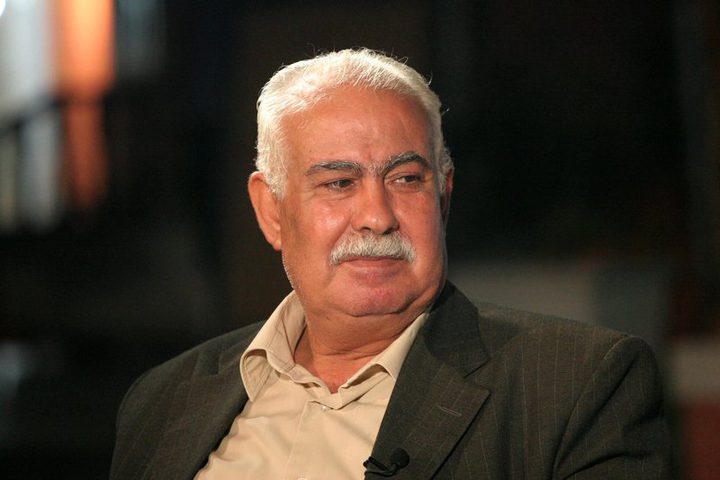When U.S. interests clash with the occupying power: priority to the former
Al-Khamisa News Network - Gaza

Author: Talal Awkal
Donald Trump had hoped that the signing of the prisoner-exchange agreement, which was signed three days earlier, would coincide with his return to the White House. At the time mediators had secured the resistance’s approval, but Benjamin Netanyahu — wanted by the International Criminal Court — continued to manipulate the White House and thwarted the deal.
At that time Trump was not talking about stopping the aggressive war and launching a peace process in the Middle East as he is today; his sole concern was to claim credit for an agreement that would lead to the release of Israeli hostages only.
Just as Netanyahu succeeded in manipulating the Joe Biden administration — continuing a pattern of manipulation of previous administrations — he also managed to manipulate the Trump administration for more than nine months, during which Trump gave him multiple chances and provided whatever was needed to finish the task. Yet Netanyahu failed to achieve any of the war’s goals except those related to destroying the Gaza Strip, increasing the human cost, and drying up the means of life in the Strip.
Netanyahu has not stopped repeating his objectives for continuing the brutal war: from destroying and dismantling the resistance movement, to forcibly freeing his captives, to displacing the Gaza population, reoccupying the Strip and settling it.
Practically and publicly, Trump adopted those objectives and spoke of a “Riviera of the Middle East” without the people of the Strip, but he too succumbed to failure until he reached his limit and was forced to intervene decisively to end the aggressive war through negotiations.
This came after the failure in Gaza, the failure to topple the Iranian regime and destroy its nuclear project, the failure to remove Ansar Allah (the Yemeni Houthis) from the conflict equation to reopen international trade routes, and after the shifts that followed the occupying state’s attack on Doha and the failure of the assassination operation against the Hamas negotiating delegation.
In grandiose language Trump said he could not continue to face a world that had turned away from support for the US-Israeli war.
It appears Trump belatedly realized that the failed Netanyahu was trying to manipulate him and his administration, that he was endangering US interests in the region, and that he was pushing both America and the Hebrew state toward growing international isolation.
Trump is mindful of the risks posed by shifts in American public opinion — across both the Democratic and Republican parties — and repeated US polls indicate these shifts have struck deeply at the Israeli narrative and are exerting strong pressure on US political leadership.
Behind Trump’s decision to end the war is his strong desire to save the occupying state from itself, after Netanyahu and his extremist right-wing coalition dragged it to the brink of the abyss, as many Israeli officials admit.
This shift in Trump’s stance also followed a red line being crossed when the occupying state struck Doha, an action that sowed doubts and negatively affected US allies’ confidence in America’s commitments to protect their security and stability.
Trump might have borne his Arab allies’ anger for a while if Netanyahu had succeeded in achieving the war’s objectives and restored the ability to subjugate them under Israeli power, continue exploiting Gulf Arab wealth and secure more funding. But he was no longer able to protect his country’s interests in the region as Israeli failure continued beyond any foreseeable limit.
Thus we must conclude that Trump was not as serious and resolute as he is now about the necessity of stopping the barbaric war and trying to achieve its aims by diplomatic means.
On timing, we cannot rule out that Trump personally seeks the Nobel Peace Prize, but that alone is not sufficient to explain his actions, whatever is said about his narcissism.
Gaza is not suited to be under American tutelage as many believe and as Trump wishes; this remains a subject for negotiation and debate. But it is certain that the occupying state has come under US tutelage: Netanyahu was not free to act or decide and had to submit to the American decision.
This is evidenced by his meeting with Witkoff and Kushner before entering the government session to ratify the deal — their half-hour attendance was enough to ensure the decision.
It is also evidenced by the US beginning to establish a military unit of 200 soldiers stationed at an Israeli base to monitor implementation of the agreement. US sources, however, confirm they do not intend to send any forces into the Strip.
Further evidence is the inspection visit made by the US delegation, accompanied by the commander of US forces and the Chief of Staff of the occupying army, to Gaza to assess compliance with the first withdrawal phase of the occupying army.
While Trump turns Netanyahu into a subordinate figure under his authority, the latter appears to be a mere media spokesman trying to repair his image in Israeli society and sell a victory narrative that does not even convince his closest associates.
The retreat from the bloody war has begun, with no return in this round of the violent conflict, and the most Netanyahu can do is find pretexts to continue intermittent bombardment, as is happening with Lebanon.
Today the Egyptian city of Sharm El-Sheikh will host a global summit attended by leaders of 20 European and Middle Eastern countries, in addition to the UN Secretary-General and officials of international agencies, to oversee the signing of the agreement, discuss ways to follow up on peace in the region, and ensure the agreement is implemented without obstacles.
The signing ceremony is no more than a demonstration of the international community’s determination to see the deal succeed, which still requires further negotiations to agree on remaining clauses that contain problematic or ambiguous elements.
The scene unfolding in Sharm El-Sheikh recalls the signing of the Oslo Accords on the White House lawn in September 1993, with wider international attendance. Will what happened to that agreement be repeated, or are things different this time?
America’s credibility and interests are at stake this time. The genocidal and starvation campaign against Gaza has produced a severe international shock, restoring the Palestinian cause to the forefront of issues that threaten global peace and the prevailing international order.
At that time Netanyahu was at the start of his youth and his rule. Will internal and external changes give him the chance to turn back the wheel of history? I doubt it.


